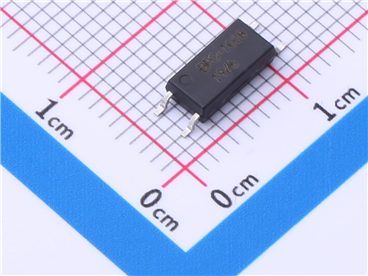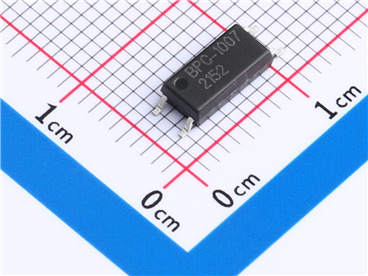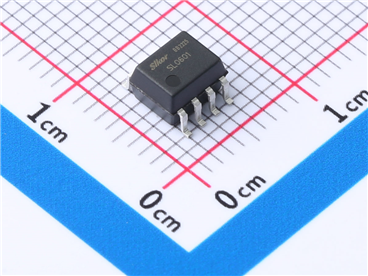Service hotline
+86 0755-83044319
release time:2025-07-04Author source:SlkorBrowse:21107
On July 3, 2025, the U.S. government announced the lifting of export restrictions on certain Electronic Design Automation (EDA) software to China, triggering strong reactions across the global semiconductor industry. As the "foundational tools" of chip design, the resumed supply of EDA software will directly impact the R&D progress of Chinese semiconductor companies while reflecting new dynamics in U.S.-China tech competition. This article comprehensively analyzes the background, specifics, reactions, short-term impacts, and long-term challenges of this policy shift, exploring China's semiconductor development path amid complex international conditions.
On July 3, 2025, the global semiconductor industry witnessed a major policy reversal—the U.S. Commerce Department’s Bureau of Industry and Security (BIS) formally notified leading EDA vendors that export controls on certain chip design software to China would be lifted. Siemens AG was the first to issue a statement confirming receipt of the U.S. government notice, announcing that its subsidiary Siemens EDA (formerly Mentor Graphics) would resume software supply and technical support to Chinese clients, including critical design verification tools like Calibre. Shortly after, Synopsys announced that based on an official BIS letter received on July 2, the export restrictions imposed on May 29, 2025, were "now revoked, effective immediately." As of July 4, while Cadence—the third EDA giant—had not formally announced, industry sources indicated it had also resumed shipments to China.
The lifting covers EDA tools for advanced process nodes (7nm and below), including core workflow software for chip layout, physical verification, timing analysis, and design rule checking. These tools are indispensable for R&D in high-performance computing, AI, and communication chips. Notably, simultaneous with the EDA relaxation, the U.S. also lifted export restrictions on ethane (a chemical feedstock), allowing companies to export to China without additional approvals. This series of moves is seen as a signal of easing tensions in U.S.-China trade negotiations.
This lifting is not an isolated event but the latest round in U.S.-China tech competition. In late May 2025, the U.S. BIS abruptly ordered the "Big Three" EDA vendors (Synopsys, Cadence, Siemens EDA) to suspend software services and technical support to Chinese clients, citing concerns about China gaining advanced chip design capabilities. The ban left Chinese chip designers unable to update or download certain EDA tools, directly impacting high-end chip R&D for 3nm and below processes.
The supply crisis quickly caused ripple effects. China’s Ministry of Commerce repeatedly condemned the U.S. for "discriminatory restrictions," warning of countermeasures. Meanwhile, domestic EDA firms like Empyrean Technology (Huada Jiutian) and Primarius Technologies (Gailun Electronics) accelerated mergers and integrations to advance self-reliance. Huawei founder Ren Zhengfei acknowledged in a June speech that Chinese chips still lag a generation behind U.S. counterparts but noted the gap could be narrowed through algorithm optimization and group computing, signaling confidence in a self-reliant path.
Analysts widely attribute the policy reversal to multiple factors. From a U.S.-China relations perspective, the timing coincides with the "90-day buffer period negotiations," interpreted as a U.S. gesture of de-escalation. Some view it as a potential trade-off involving "rare earth export controls" and "chip technology restrictions." From an economic interest standpoint, China accounts for 12%-16% of revenue for firms like Siemens and Synopsys. Prolonged restrictions would not only hurt sales but also accelerate China’s domestic alternatives, eroding long-term U.S. competitiveness. As NVIDIA CEO Jensen Huang previously warned: excessive controls would push China to build an independent tech ecosystem, ultimately damaging U.S. industrial advantage.
For China’s semiconductor design industry, the lifting is a timely reprieve. During the over one-month cutoff, Chinese chip designers faced dilemmas: either use "frozen versions" of EDA tools (perpetual licenses or subscription versions) without access to updates or support, or switch to domestic alternatives—which currently offer better support for mature nodes (28nm and above) while full-flow solutions for advanced nodes (7nm and below) remain under development. Restored access to Siemens and Synopsys tools will help ensure design continuity, accelerate tape-out verification, and improve project execution efficiency.
For the global EDA market, the policy easing stabilizes supply chain expectations. According to China Reporting Hall data, Synopsys, Cadence, and Siemens EDA still held ~82% of China’s EDA market share in 2024. Following the announcement, Synopsys’ stock rose nearly 6%, reflecting market optimism. The global EDA market is projected to grow from $15.71 billion in 2024 to $18.33 billion by 2026, with China’s market showing particularly strong momentum—reaching ¥12.7 billion in 2023 and expected to exceed ¥18.49 billion by 2025.
However, deep-seated challenges remain. The current relaxation covers only select EDA tools, with the scope for certain high-end products from Synopsys and Cadence still unclear. EDA tools remain heavily reliant on U.S. technological foundations, leaving China’s chip industry exposed to "chokepoint" risks. Invisible boundaries or temporary constraints may persist for high-sensitivity projects in [敏感词], AI models, and supercomputing. U.S. semiconductor policy toward China follows a cyclical pattern of "probing-pressure-partial reversal," suggesting this lifting is more tactical than strategic.
Despite resumed international supply, the urgency for domestic substitution is widely recognized. In the month following the May cutoff, Chinese EDA firms saw short-term opportunities: Empyrean emphasized its toolchain was independently developed and unrestricted, reporting 2024 revenue of ¥1.22 billion (+20.98% YoY) and maintaining its lead in domestic market share; Primarius highlighted that its product performance now surpasses international rivals in some areas, with lower barriers for user migration. Chip designers like Jingjia Micro have partially adopted domestic EDA tools, validating basic substitution capabilities.
Mergers and integrations have become a strategic shortcut for Chinese EDA firms. Since 2024, Empyrean has acquired Xinda Tech, Akesi, and Xhe Electronics to build a full-flow platform covering analog, digital, and package design; Primarius consolidated six acquisitions to enhance capabilities in device modeling and board-level design, forming a "design-manufacturing integration" solution. Industry analysis notes that international EDA giants grew through acquisitions—a path Chinese firms are following to shorten the technology catch-up cycle.
Nevertheless, technical gaps persist. Domestic EDA has progressed in analog circuits and memory design but still relies on international tools for high-end digital chip design and system-level verification. Semiconductor experts stress that EDA R&D requires long-term industry collaboration—isolated tool innovation cannot support full-flow demands. For example, in areas critical to sub-7nm processes like nanoscale chip simulation and multi-physics co-optimization, domestic EDA lacks complete solutions.
Facing policy volatility risks, China’s semiconductor industry must pursue a dual-track strategy of "autonomy + openness." Short-term, leverage the window of restored international EDA access to accelerate ongoing chip design projects. Medium-to-long-term, break through in key technologies while utilizing international rules to expand cooperation. Ren Zhengfei’s proposal of an "asymmetric innovation path" (e.g., algorithm optimization, quantum chips) may chart China’s course for technological breakthroughs.
Industry chain collaboration will be decisive. Domestic EDA firms need deep partnerships with chip designers and wafer fabs to refine tools through real-world projects. Empyrean already serves nearly 700 clients across analog circuits and memory design; Primarius collaborates with Samsung and SK Hynix, validating its global service capabilities. Policy-wise, cities like Shenzhen and Shanghai have established EDA industry funds to promote domestic tool adoption. If external restrictions persist, China’s EDA market could grow from ¥12 billion in 2023 to ¥44.56 billion by 2026.
AI technology presents new opportunities. AI algorithms can optimize chip design flows, improving efficiency and precision. Domestic players are rapidly integrating AI—for example, Semitronix’s SemiMind platform incorporates large models to build industry knowledge bases and enable low-code development; EDA software for domestic FPGA design (e.g., Yilingsi) uses AI to enhance code performance. This "intelligent transformation" could enable Chinese EDA to leapfrog competitors.
Table: Evolution of U.S. EDA Export Restrictions and Impacts
| Timeline | Policy Content | Industry Impact | Chinese Response |
|---|---|---|---|
| Late May 2025 | U.S. BIS orders Big Three to suspend services to China | 7nm-below chip design in China stalled; global supply chain shaken | Accelerated domestic substitution; orders surged for Empyrean etc. |
| July 3, 2025 | Partial lifting of EDA restrictions; Siemens/Synopsys resume supply | Design continuity restored; U.S. EDA stocks rose | Dual-track: use int’l tools + boost R&D |
| Future Trend | Invisible restrictions may persist in high-end sectors; policy volatility expected | Global EDA market grows; China’s share increases | Full-flow toolchain breakthroughs; AI-driven innovation |
The U.S. lifting of EDA export restrictions marks a new phase in semiconductor competition. While easing short-term pressure on Chinese chip designers and stabilizing global EDA growth, it underscores the enduring importance of core technology self-reliance. History shows that blockades often accelerate innovation—from Huawei breaking EDA constraints to domestic CAD software maturing, each sanction has forced China’s tech industry to address weaknesses.
The next 5-10 years will be critical for China’s EDA development. On one hand, sustained investment in core algorithms and building a local EDA-foundry ecosystem is essential. On the other, openness to global collaboration must continue. Amid industry transformations driven by AI and cloud migration, China has an opportunity to forge a new model: "foundational tool autonomy + global leadership in niche domains." Semiconductor competition is ultimately about ecosystems—only by balancing independent innovation with international cooperation can China secure its place in global tech leadership.
This event reaffirms a truth in our deeply globalized world: technology restrictions are a double-edged sword. For China’s semiconductor industry, neither short-term relief nor external pressure should alter the course—breakthroughs in critical fields paired with deeper international cooperation in areas of strength may be the most rational path forward.









Site Map | 萨科微 | 金航标 | Slkor | Kinghelm
RU | FR | DE | IT | ES | PT | JA | KO | AR | TR | TH | MS | VI | MG | FA | ZH-TW | HR | BG | SD| GD | SN | SM | PS | LB | KY | KU | HAW | CO | AM | UZ | TG | SU | ST | ML | KK | NY | ZU | YO | TE | TA | SO| PA| NE | MN | MI | LA | LO | KM | KN
| JW | IG | HMN | HA | EO | CEB | BS | BN | UR | HT | KA | EU | AZ | HY | YI |MK | IS | BE | CY | GA | SW | SV | AF | FA | TR | TH | MT | HU | GL | ET | NL | DA | CS | FI | EL | HI | NO | PL | RO | CA | TL | IW | LV | ID | LT | SR | SQ | SL | UK
Copyright ©2015-2025 Shenzhen Slkor Micro Semicon Co., Ltd